Agia Lavra Monastery sits high up at 961 meters on Mount Chelmos, and honestly, it feels like walking straight into a living chapter of Greek history. I made my way up the winding mountain road on a crisp spring day, just 5 km from the cozy town of Kalavryta. The stone buildings rise among trees and greenery, giving the place a mix of peace and quiet strength.
Agia Lavra isn’t just a beautiful religious site—it’s where the Greek War of Independence really began. Back in 1821, Greek revolutionaries gathered here and pledged themselves to the fight for freedom from Ottoman rule. As I wandered the grounds, I swear you could almost hear the echoes of those voices that changed Greek history forever. Inside the church, the first historic flag of independent Greece still hangs—a simple, moving reminder of the struggle.
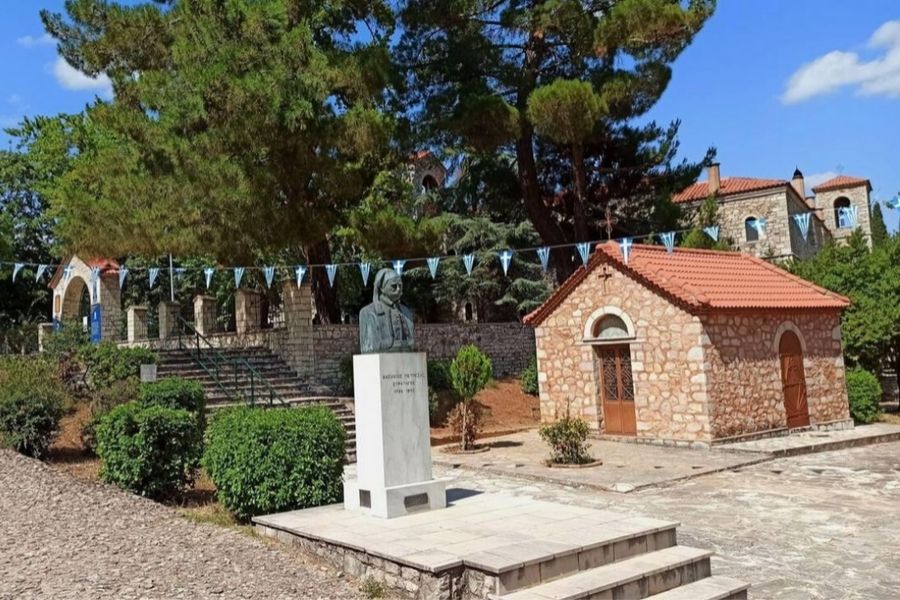
The monastery’s roots stretch way back before the revolution, with its first stones laid in 961 AD. While exploring the cluster of sturdy buildings, I kept stopping just to soak in the mountain views and the weight of what happened here. If you want to really feel the deep bond between Greek identity, faith, and freedom, Agia Lavra delivers something no history book can.
The Story Behind Agia Lavra Monastery
Agia Lavra Monastery, perched at 961 meters on Mount Chelmos, holds a story that’s all about faith, revolution, and what it means to be Greek. This place has seen centuries come and go, and it stands as a symbol of Greece’s fight for independence.
Founding and Early Days
The story of Agia Lavra kicks off in 961 AD, making it one of the oldest monasteries in the Peloponnese. I was genuinely surprised by its age and endurance when I visited. The founders picked this remote mountain spot for spiritual solitude and a bit of protection from any would-be invaders.
“Lavra” comes from the Greek word for monastery or hermitage, which fits its original purpose perfectly—a haven for prayer and contemplation. Walking those ancient corridors, I really felt the centuries under my feet.
Over time, Agia Lavra became more than just a religious center. The monks preserved manuscripts, icons, and cultural treasures, keeping Greek heritage alive during the years of Ottoman rule.
Role in the Greek War of Independence
What sets Agia Lavra apart is its central role in Greece’s struggle for freedom. In 1821, this monastery became the symbolic birthplace of modern Greece. Tradition says Bishop Germanos of Patras raised the revolutionary flag here, blessing the fighters who would take on the Ottomans.
I stood in the courtyard where those revolutionaries took their famous oath—“Freedom or Death.” The monastery turned into a rallying point for the independence movement that eventually shaped the Greek state.
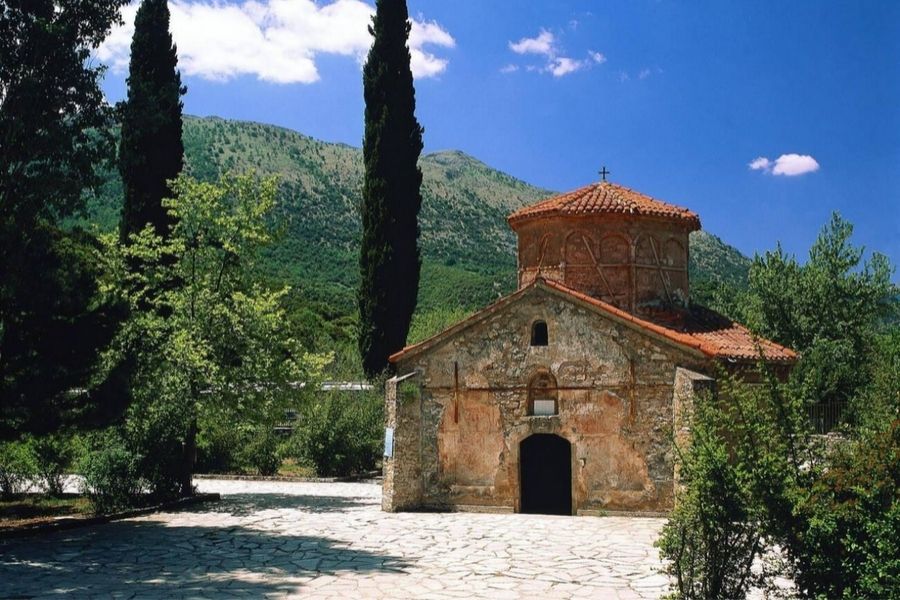
Agia Lavra’s mountain location made it a perfect hideout and meeting place for resistance fighters. Its spiritual significance gave the revolution extra weight, uniting Greeks under both faith and the hope for freedom.
Legends and Spirited Figures
This place is wrapped in legends and stories of brave figures. Bishop Germanos stands out—he openly defied Ottoman authority and inspired people to rise up.
During my visit, a local guide showed me the monastery’s prized relics, like the so-called revolutionary flag. Whether every detail is true or a bit embellished, these stories and objects have become powerful symbols of what it means to be Greek.
The monastery holds tales of monks who risked everything to protect sacred treasures. I found the stories of religious leaders working side by side with military commanders especially moving. It’s a reminder that the revolution brought together people from all walks of life.
Walking Through the Hallowed Halls
Stepping into Agia Lavra, I felt the ancient stone walls almost whispering stories of revolution and faith. The interior is packed with Greek heritage, from intricate iconography to hidden chapels tucked away in shadowy corners.
Highlights of the Monastery Complex
Built in 961 A.D., the monastery sits on the hillside above Kalavryta. Its stone architecture blends into the mountains, and there’s this sense of timelessness that’s hard to put into words.
The main church (katholikon) anchors the complex, surrounded by monks’ cells, storerooms, and a bell tower you can spot from far off.
I stood in the central courtyard where Bishop Germanos reportedly raised the flag of revolution in 1821. That spot marks the beginning of Greece’s fight for independence.
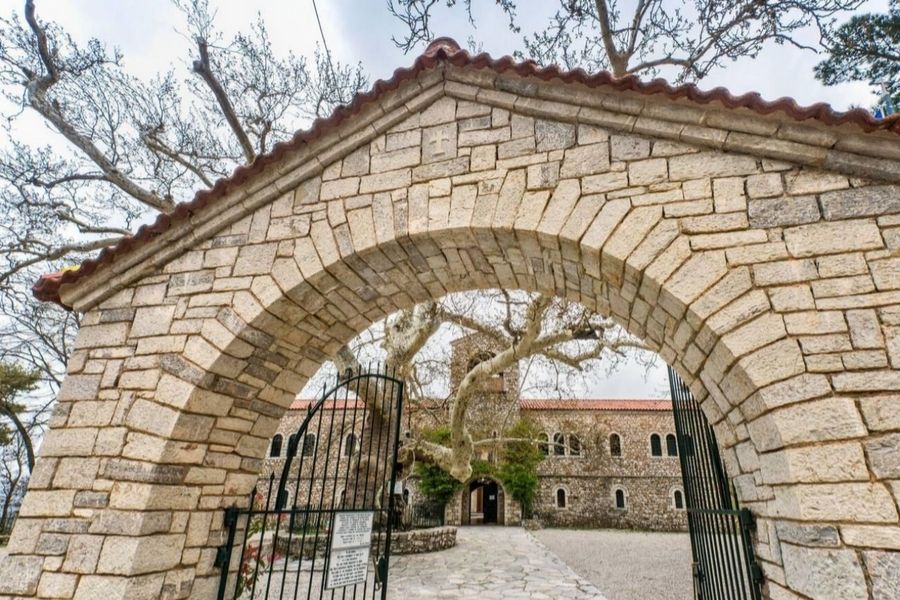
The ecclesiastical museum displays precious artifacts that survived the monastery’s many destructions over the centuries.
Iconography and Religious Relics
The walls are covered in Byzantine-style iconography that tells biblical stories and shows the lives of saints. I spent ages just looking at the gold leaf details and vibrant colors—how have they survived so long?
One of the most treasured relics is the embroidered banner of the revolution, a strong symbol of Greek independence. The monastery also keeps ancient manuscripts, vestments, and sacred vessels used in Orthodox ceremonies.
I found myself drawn to the ornate iconostasis (icon screen) that separates the nave from the sanctuary. The carvings and gold touches really highlight the spiritual depth of this place.
Discovering Hidden Chapels
Beyond the main church, I found several small chapels scattered around the grounds. Each one has its own character and vibe. The Chapel of St. George, tucked away in the east corner, holds some of the oldest frescoes here.
I stumbled into a tiny chapel for the Virgin Mary while wandering a quiet corridor. The space felt intensely personal—just candlelight and a bit of sun through a small window.
These chapels offer quiet spots for reflection, away from the busier parts of the monastery. In one secluded chapel, I sat alone for nearly twenty minutes, just soaking up the peace and the centuries of spiritual energy.
Each chapel has its own icons and religious items, forming a network of sacred spaces within the larger complex.
A Mountaintop Experience: Sights and Atmosphere
Sitting 961 meters up on Mount Helmos, Agia Lavra gives you more than just a history lesson—it’s a full-on sensory journey. The view alone is something else, but the history makes it unforgettable.
Stunning Views Over Kalavryta
The view from Agia Lavra honestly stopped me in my tracks. From the courtyard, you can see the whole Kalavryta valley spread out like a patchwork quilt. Mountains surround you, making the place feel like a natural amphitheater.
On a clear day, I even caught a glimpse of the sea glinting on the horizon. It’s easy to see why monks picked this spot centuries ago.
Light changes everything here. Early mornings bring fog in the valley, and sunsets turn the stone golden.
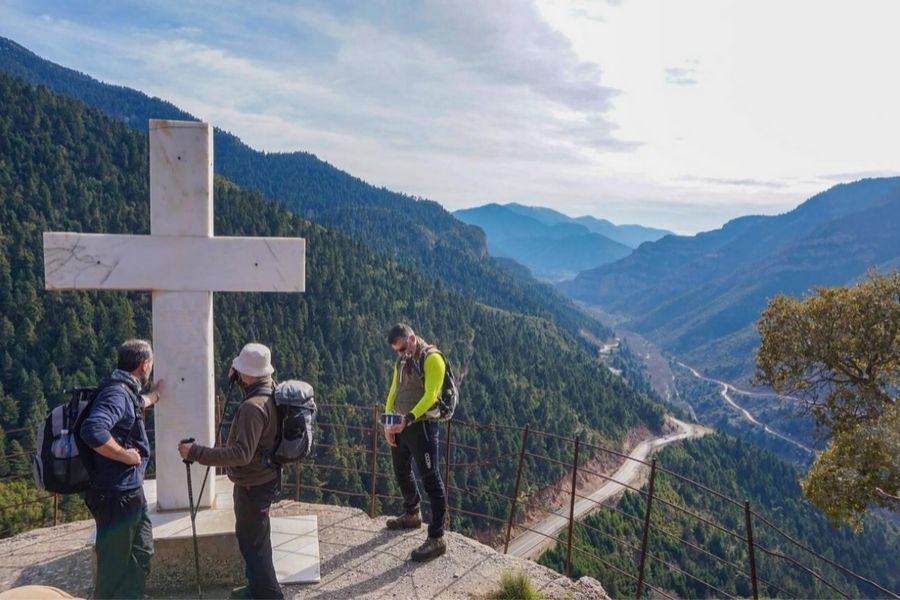
If you have binoculars, bring them. You’ll spot tiny villages and winding roads far below.
The Sense of Peace and Weight of History
Walking the stone corridors, I felt calm settle over me, even though this place played a huge role in Greece’s revolution. The thick walls keep the world’s noise out, turning the monastery into a peaceful refuge.
It’s wild to stand where the revolutionary banner was first raised in 1821. The original flag is still inside—a simple but deeply moving artifact.
The monastery isn’t huge, and that actually makes it better. You can find quiet corners to think about everything that happened here.
The monks keep traditions alive with their daily routines, grounding visitors in the present while linking them to the past.
Seasonal Beauty and the Changing Landscape
Every season turns Agia Lavra into a different place. Spring covers the slopes in wildflowers and fresh green. Summer gives you clear views that stretch for miles.
I’m partial to fall. The leaves go red and gold, and the cooler air is perfect for hiking around the monastery.
Sometimes winter brings snow, and the contrast of white against the old stone makes for amazing photos.
The changing seasons also affect the crowds. Summer gets busy, but winter is almost eerily quiet. I found spring and fall just right—good weather, fewer people.
Planning Your Visit to Agia Lavra Monastery
Visiting Agia Lavra takes a bit of planning, but it’s worth it. The historic site sits high up and offers both spiritual significance and some of the best mountain views you’ll find.
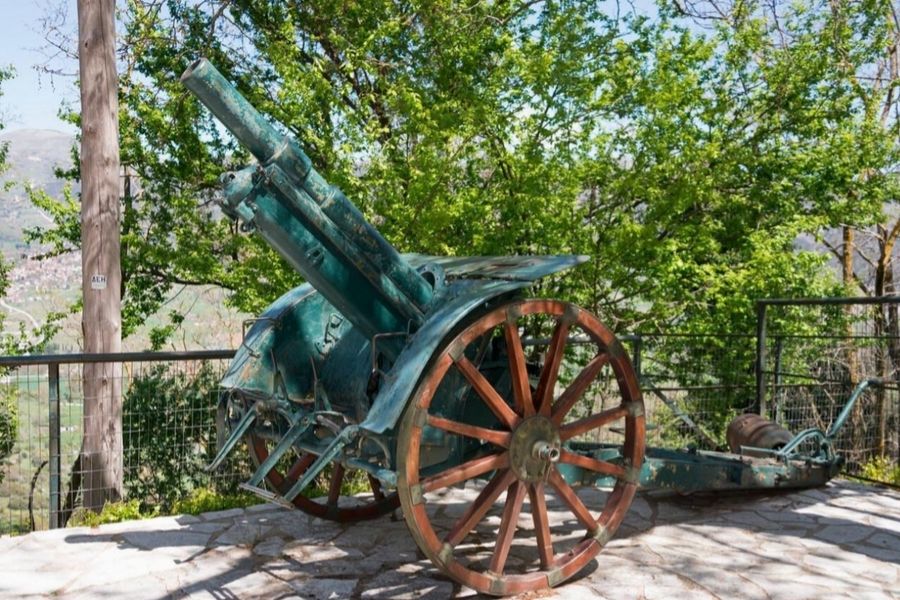
Getting There and Accessibility Tips
I found the easiest way to reach Agia Lavra is by car from Kalavryta, just 5 kilometers away. The mountain road has great views, but take it slow—especially if there’s snow in winter.
If you’re coming from Athens, day tours are a good option. They handle transportation and sometimes include stops at Kalavryta or Mega Spileo Monastery.
Public buses go to Kalavryta from Patras, but you’ll need a taxi for the last stretch up to the monastery.
The place sits on a hillside, so wear comfortable shoes. Some spots have steps or uneven ground, which might be tough for anyone with mobility challenges.
Best Times to Visit and Local Traditions
I’d say visit in spring (April-May) or fall (September-October) for mild weather and fewer crowds. Summer gets busy, while winter is beautiful but sometimes tricky to access if it snows.
March 25th—Greek Independence Day—is a big deal here. Special ceremonies mark the start of the revolution. If you’re around then, you’ll see local traditions and maybe even a reenactment.
July 15th is another key date, with religious services and festivities for the monastery’s feast day.
Mornings are usually quieter and have better light for photos, before the tour groups show up.
Etiquette and What to Expect
When I visit Agia Lavra, I always dress modestly out of respect. Women should cover shoulders and knees, and men should skip the shorts. The monastery lends wraps if you need them.
Photography is fine in most places, but not during services or in certain parts of the church. If you’re unsure, just ask a monk before snapping photos.
Inside, you’ll see the historic flag, religious artifacts, and gorgeous Byzantine icons. The museum has manuscripts and other treasures.
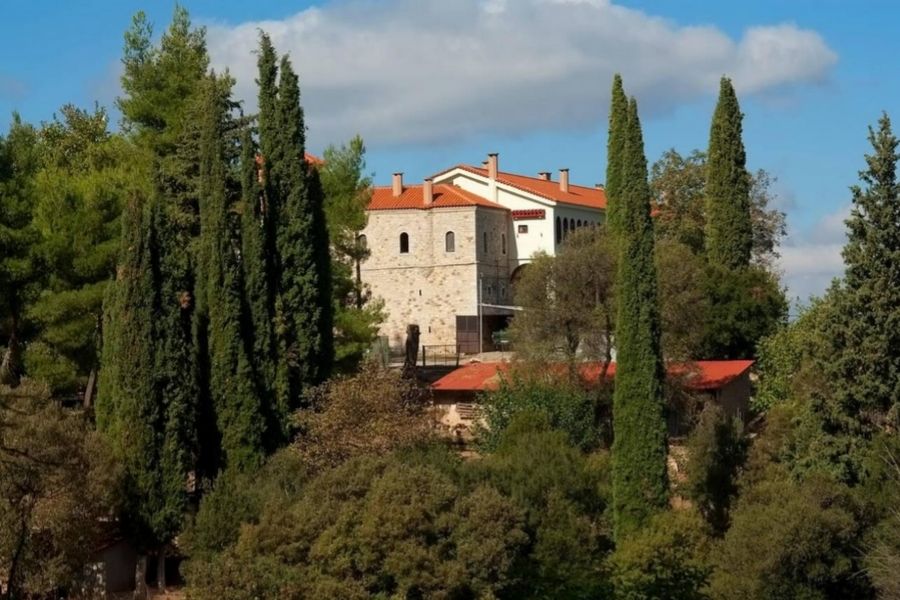
A small donation is welcome but not required. The monks are friendly—some speak English—but they appreciate it if you keep things quiet and respectful.
Nearby Attractions Worth Exploring
While you’re in the area, check out Mega Spileo Monastery (Great Cave Monastery), about 10 kilometers away. It’s built right into a cliff and holds important relics.
Kalavryta town is worth a stroll, especially the Holocaust Museum that remembers the 1943 massacre. You’ll also find some great tavernas with local mountain food.
Nature lovers should try the hiking trails on Mount Helmos. The Vouraikos Gorge is nearby, and you can ride the rack-and-pinion railway from Diakofto to Kalavryta.
The Cave of the Lakes, about 17 km away, hides an underground river with 13 lakes and some pretty wild stalactites and stalagmites.
Personal Reflections and Lasting Impressions
Agia Lavra Monastery left me with emotions I still can’t quite shake. The mix of spiritual energy and historical weight makes it a place where you don’t just learn about Greece’s fight for independence—you feel it.
Feeling Connection to Greek Heritage
I stood where Bishop Germanos raised the flag of revolution in 1821, and honestly, history just felt alive. Those ancient stones under my hand—somehow, they made me feel like I was reaching right back to my ancestors who fought for freedom.
The monastery doesn’t just keep artifacts behind glass. It keeps this stubborn, resilient spirit pulsing through every wall.
I sat quietly in the small chapel. Tears welled up, and I didn’t expect that at all.
The candles flickered, and the faded frescoes almost whispered to me. It hit me on a level I can’t quite explain.
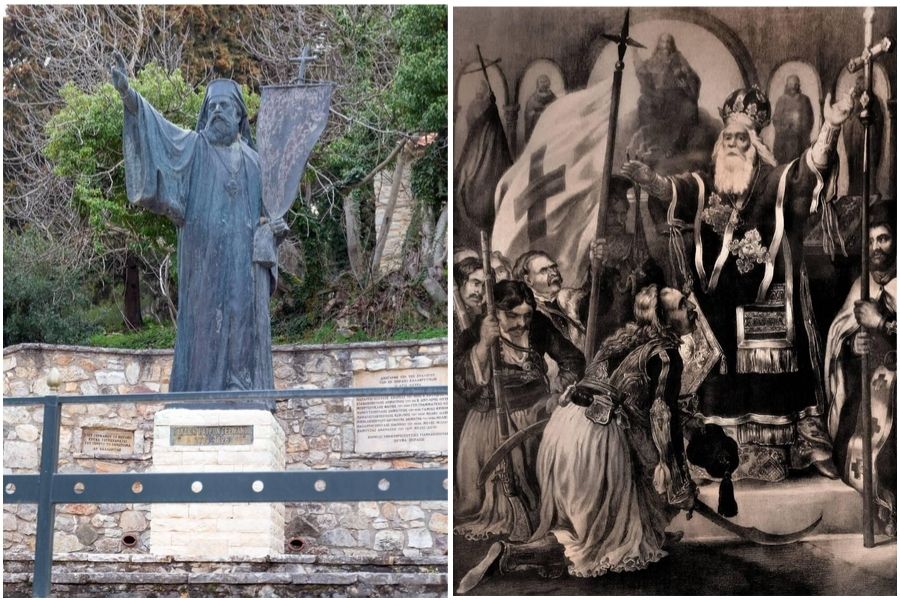
Plenty of visitors said they had the same kind of emotional connection, even if they weren’t Greek. One older man told me he finally got what his grandfather’s stories meant after coming here.
Moments of Pride and Reverence
I walked the same paths as the revolutionary heroes, and honestly, it filled me with immense pride. Greek families wandered nearby, explaining the significance to their kids—passing down not just facts but a real sense of identity.
At sunset, the most powerful moment hit me. The monastery bell rang out, and everything just… stopped. For a minute, I felt like I belonged to something much bigger than myself.
If you get the chance, try sitting alone on the eastern wall overlook. The panoramic view of mountains—those same ones that once sheltered freedom fighters—makes the perfect spot to just think.
I flipped through the guest book and found similar feelings from people all over the world. Notes about peace, freedom, and these surprising spiritual connections, no matter their background.

